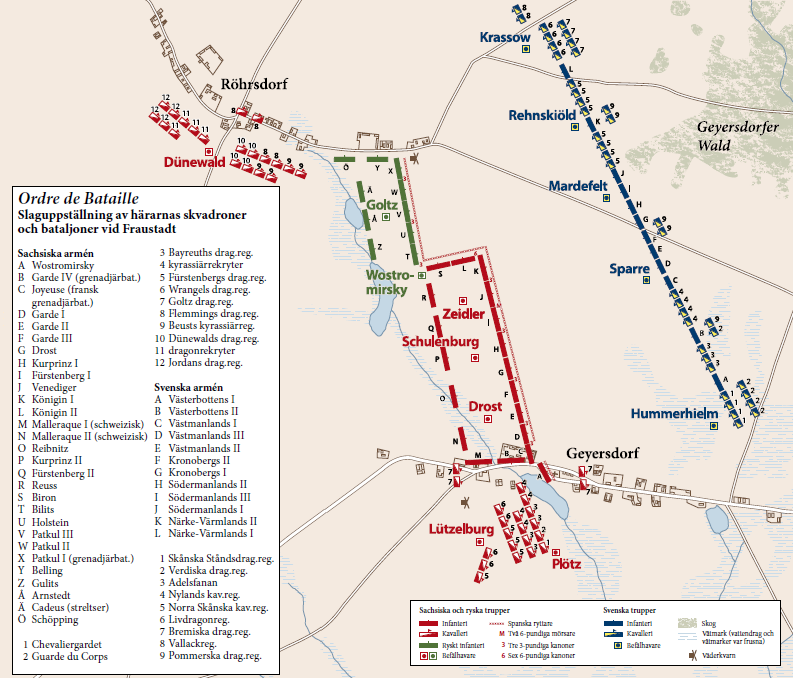|


The battle of Fraustadt
(February 1706) was next to the battle of Narva the greatest Swedish victory
in the Great Northern War. A Swedish army of 10 000 men commanded by Carl Gustaf Rehnsköld
attacked and almost annihilated a two times larger Saxon-Russian army near
Poland's western border. The Swedish war effort in Poland was before the
battle seemingly close to a complete collapse because the Swedish main army
led by Charles XII had their hands full in the east. But thanks to Rehnsköld's
victory at Fraustadt and Charles XII's encirclement of the Russian main army
in Grodno the campaign instead ended in a complete
Swedish triumph.
Before the year was over Saxony would sue for peace and accept Stanislaw Leszczynski
as Polish king. The Swedish army could thereafter direct all its effort on
defeating the last remaining enemy, Russia.
The battle itself, which
according to the Swedish
calendar happened 3 February, but according the Gregorian calendar (used by
the Saxons) 13 February and according to the Julian calendar (used by the
Russians) 2 February, have often been called a Swedish variant of Hannibal's
pincer movement in the battle of Cannae 216 BC. But the battle was actually
planned by Rehnsköld as a frontal attack in which the Swedish numerical
inferiority would be countered by thrusting through the enemy line with cold
steel weapons before the enemies superior fire power could make an impact.
Circumstances in the battle resulted however in the cavalry wings moving
around obstacles and attacking the Saxon's flanks in classic Hannibal style.
In any way the battle ended with a total victory for the Swedish army. Over 7 000
Saxons
and Russians were killed and just as many were captured. The Swedes only
lost 400 men.
The map above show the positions of the two armies just
when the battle started. The map is taken from the book "Fraustadt 1706 - Ett fält färgat
rött" (2008) with permission from its author Oskar Sjöström. |

